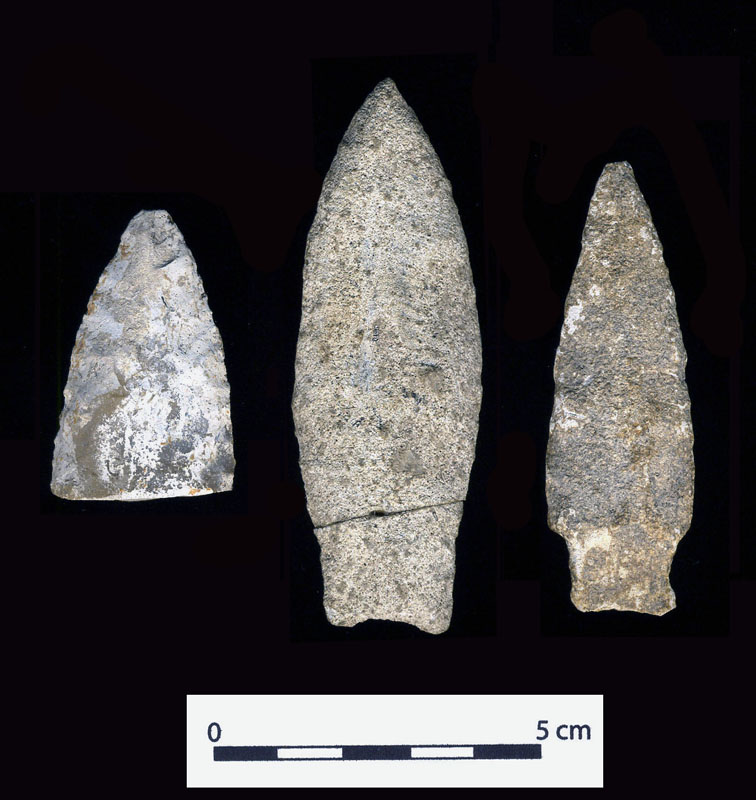
A few Late Paleoindian and Early Archaic artifacts recovered from the "transition" zone were encrusted with calcium carbonate. This natural coating was deposited by calcareous ground water. While some of the Pleistocene bones from the site had similar encrustations, this does not imply that the fossil bones and the stone tools are of the same age. Instead, the artifacts and the bones came to be deposited in the same layer and were subject to the same soil conditions in the transition zone.
From left to right: a distal biface fragment, a lanceolate point similar the proposed Victoria type (and to Angostura), and a side-notched Early Archaic dart point illustrate the degree of encrustation typical of the deeper deposits at Morhiss. TARL collections.